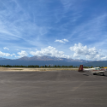Mooney down near PIA
-
Members Online
- PT20J
- wingslevel
- TCC
- n13951pm
- acekng1
- Jim F
- peterl
- rickseeman
- Grumpy
- MikeOH
- affricate
- ArtVandelay
- Glen Davis
- RGDantas
- MattD89
- OR75
- Gary Bymers
- rturbett
- Danb
- Joshua Blackh4t
- Z W
- Tyler G
- Utah20Gflyer
- Ibra
- GeeBee
- PhateX1337
- 231MJ
- Shadrach
- Igor_U
- Paradigm
- bjames
- 201er
- PeteMc
- Jim Peace
- Ews1981
- M20R
- eman1200
- Zippy_Bird
- RoundTwo
- Flyler
- Schllc
- TuomoMooneyFlying
- skydvrboy
- oregon87


Recommended Posts
Join the conversation
You can post now and register later. If you have an account, sign in now to post with your account.